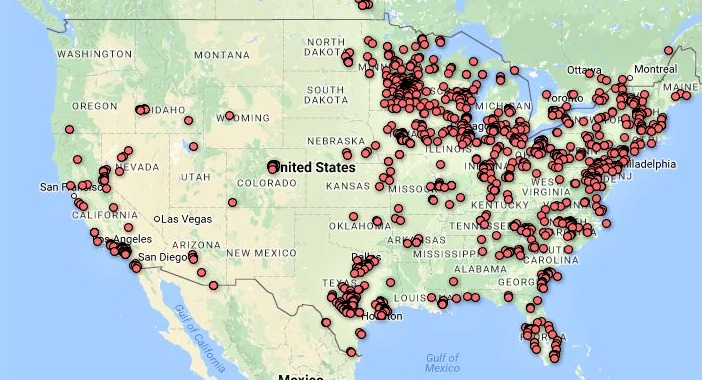Now is the time to show monarchs how much you love ’em.
Sponsored by the Monarch Joint Venture, the International Monarch Monitoring Blitz (IMMB) invites community scientists to report observations during July 29 – August 5 to help scientists understand the range and population size of late summer breeding monarchs across North America. Blitz data from this small window will provide a snapshot of monarch breeding activity as the butterflies prep for their big migratory journey.
Butterfly watchers across the county and those in Canada and Mexico will record observations wherever there is milkweed, whether planted by humans or found naturally. It’s a simple process: check to see if there are monarch eggs, caterpillars and/or chrysalises (usually chrysalises won’t be on the milkweed plant, but found hidden nearby) – all indicators that monarchs are reproducing. Then go online and record your observations. Voila!

It’s no news that monarch butterflies have been struggling to survive in the United States which has seen numbers of the flappers dramatically declined 70 percent across the country in the last two decades. It’s hard to find those huge kaleidoscopes swarming overhead as the noble butterflies search for the perfect nectar location or are on route to a far-off migratory destination.
Regular folk around the country have responded to the monarch crisis by participating in various community science programs aimed to provide observational data that will be invaluable to scientists as they chart a path for the royal b-fly to resume its rightful place in the pantheon of beloved flying bugs.
The IMMB experience is just a taste of what thousands of other monarch lovers have been doing regularly through the Monarch Larvae Monitoring Project (MLMP), a program that originated in Minnesota about 28 years ago. “We just started small with a few volunteers here locally, but now have thousands of sites all around the country,” says Cora Lund Preston of the MLMP.

With 64 monitored sites in California this year, SoCal volunteers have participated from Santa Ana to Covina, from La Canada to Beverly Hills. Some observations come from individuals, others come from schools or groups, says Lund Preston.
Many volunteers are furthering their citizen scientist cred by raising larvae and recording the rate of successful metamorphoses. Many times, their observations are the basis of important scientific papers, like one that was recently published in the Annals of Entomological Society of America on the rate of parasitoids on monarch larvae. Translation: the number of times a parasitoid fly infects a caterpillar to use that body as a host for their eggs.

Needless to say, when a volunteer expecting to witness emerging from a chrysalis a vibrant colored butterfly gets instead a scary-looking fly, “it’s a little bit like the movie Alien,” admits Lund Preston with a laugh.
To date, larvae-raising volunteers have collected and cared for more than 20,000 monarch eggs and caterpillars, also recording incidents of parasitic fly takeovers. Volunteers have sent 1,100 species of those flies to entomologists for identification, once again providing valuable data.
These fly species aren’t considered a big threat to the monarch’s overall survival, but knowing typical rates of parasitism does help scientists differentiate between nature and man-made impacts on the butterfly.
“It was the volunteers in the field who encouraged us to start monitoring for the parasitic flies because they were seeing it pop up every now and then,” admits Lund Preston. “Most of what we know about monarchs comes from the community scientists. It’s a rich history that goes back to the 1950s when groups kept records at wintering sites. This butterfly has been loved for a long time.”

Data collected by the MLMP is openly available for use by scientists and has been the source for many other scientific papers including another recent study on the more preferred location of milkweed: roadside or garden habitat? There’s even been a study on community science itself.
Lund Preston says that monarch volunteers don’t fit a neat profile: some are students, retirees, part of a nature center or garden club. The only unifying element is a love for those graceful flutterers that make human hearts skip a beat out of pure joy.
“Monarch conservation is so critical right now,” she says adding that the push continues to advocate the U.S. Fish and Wildlife Service to list the butterfly as an endangered species. “There is a critical need for more information which will inform that ultimate decision. Our community scientists are in the field and are definitely are instrumental in securing the future of the monarch butterfly.”

— Brenda Rees, editor
